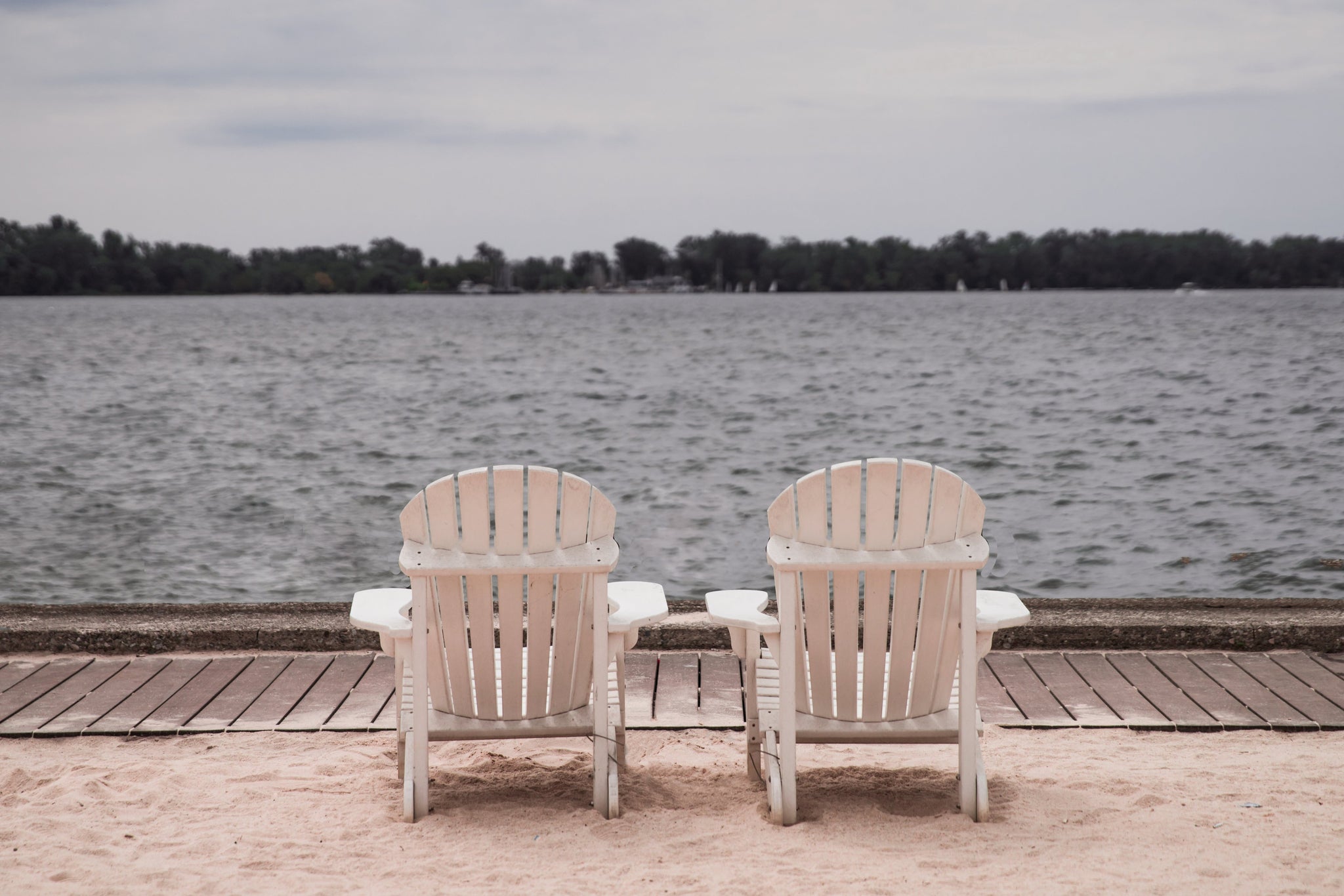Clear Lake Coffee Roasters Presents: Explorer Series, History Edition - Costa Rica Once Grew Chile’s Best Coffee - September 28, 2020

In the 1830’s, Costa Rican coffee came from Chile. It really did. As the commercialization of coffee growing began to take hold in Costa Rica, producers struggled to find markets. For a time, most Costa Rican coffee was being exported to Chile, where it would be re-exported to Europe as a Chilean product: “Café Chileno de Valparaíso,” named after the port town from which it shipped.
For us, looking backward, it’s hard to imagine the circumstances. Why didn’t Costa Rica just export coffee directly to Europe? Well, as in most business, it was a matter of who you know. Costa Rican coffee producers didn’t know anyone with a ship that sailed to Europe. It’s almost that simple. In the parlance of our times, Costa Ricans may not have been the best “networkers” back in the day. When Mexico declared independence from Spain after 10 years of war in 1821, the rest of Central America piped up and said “yeah, us as well then.” Costa Rica was taken a little bit by surprise. It wasn’t that Costa Ricans didn’t care about independence; they cared about it so much that they had essentially been operating as an independent country already. This independence was reflected in an ongoing reluctance if not outright unwillingness to join attempts at forming a larger Central American state, like the post-independence “Federal Republic of Central America,” which Costa Rica didn’t quit so much as it just stopped showing up for meetings and then changed its phone number.

Coffee drying patio in Costa Rica by Todd Mackey
This is simplifying the reality only slightly. As for coffee, it’s difficult to put ourselves in their shoes nearly 200 years later, but imagine you live in Costa Rica in the early 19th century and you’ve decided to grow coffee. First, good for you. This is a brave journey you’ve undertaken, having to wait five years after planting to realize your first harvest. Compared to almost every other cash crop being grown in Costa Rica at the time, waiting five years from planting to first harvest required some intestinal fortitude. Once you have coffee, what will you do with it? Bring it to the nearest port and sell it (or ship it on consignment). Sell it to who? Someone with a ship. Where will they take it? You don’t know. You sold your coffee, that’s what you know. If there are better prices to be had by shipping the coffee elsewhere, how would you know this? You wouldn’t.
As a coffee grower and seller in Costa Rica, or anywhere, in the 1830’s, you would have no idea what your coffee was actually worth to the end user and thus no way to reverse engineer the value of your coffee on the dock. And if there are only one or two buyers on the dock, it doesn’t matter anyway. Reality is defined by your options, the empty ships waiting in the harbor at Puntarenas inside the Gulf of Nicoya on the Pacific coast.
Although ships had been sailing through the Strait of Magellan at the southern tip of South America for more than 300 years, one still needed a good reason to do so. It may have been worthwhile to bring coffee 9,000 nautical miles from Valparaíso, Chile, to London, but sailing to Costa Rica added an additional 2,500 miles and 22 days to the trip. It appears the added expense was greater than simply purchasing the coffee in Chile. And this was the complaint of coffee farmers in Costa Rica. They were growing more coffee than they could sell and at the mercy of shipping companies when it came to expanding their market.
When coffee first came to Costa Rica is the subject of some debate. On the more romantic side is the pleasant notion that coffee came to Costa Rica directly from the coffee motherland, Ethiopia. More likely, and less intriguing, is the idea that coffee came to Costa Rica from the Johnny Appleseed of coffee, the Caribbean islands, the most productive coffee region in the world in the late 18th and early 19th century. Coffee came to Costa Rica as early as 1779 and within 50 years was generating more revenue than any other crop, but they were growing more coffee than the middlemen heading for Chile or a few buyers in Panama could take. And virtually no infrastructure existed for transporting even a small amount of green coffee to the east coast of Costa Rica (where London was a mere 5,000 miles away).

Oil painting; Captain William Le Lacheur, artist unknown. Photo credit: Guernsey Museum.
Apparently, the distribution woes of Costa Rican coffee producers were known in the region, as far as Mexicali, where news met the ears of an up-and-coming shipping magnate named William Le Lacheur in 1841. Le Lacheur was owner and captain of the three-mast barque ship, Monarch, which had just been launched in February of that year. Captain Le Lacheur had experience sailing in the Atlantic and Mediterranean, but with his new and large ship he sailed to Texas, Brazil, around Cape Horn, Chile, and Mexico, where he learned about Costa Rican coffee producers hoping to trade directly with Europe. On Christmas day, 1841 he sailed into port at Puntarenas, Costa Rica. It’s not clear whether or not he loaded coffee at that time, but when he arrived back in London in September of 1842 he stayed for only a month, setting sail again for Costa Rica in October of that year and arriving back at Puntarenas in March of 1843. Costa Rican coffee now had a direct connection to London and all of Europe. When Le Lacheur returned to England later in 1843, the Monarch carried more than half a million pounds of coffee. Other than 72 hides, there was no room for anything else.
Wisely, the Costa Rican government set aside some of the profit from coffee sales to purchase technology, which Le Lacheur brought back on his return voyages. In the cargo hold there sewing machines sitting next to the latest farm and coffee milling machinery. Although Le Lacheur & Co. had shipping business in other places, Costa Rica and coffee really built the company. William Le Lacheur’s devotion to Costa Rica seems to have gone beyond making a profit and his protestant Christian missionary zeal.
He made friends with coffee farming families and arranged for their children to receive education in England. In 1846 he built a home in San Jose. In 1850 he launched another three-mast ship, the Costa Rica, which was designed specifically for transporting coffee. In 1856, an American with delusions of grandeur and a belief that manifest destiny should extend to the tip of South America, attempted to invade Costa Rica. His name was William Walker and in exchange for a promise that any new American states he established would be slave states, his adventures were financed by wealthy southerners. He’d already taken over Nicaragua. But his march south was halted when William Le Lacheur turned over his ships (which were in the process of loading coffee at Puntarenas) to the Costa Rican military so they could quickly transport troops to the northern border, where they defeated Walker.

Costa Rican 10 Colones banknote featuring one of Le Lacheur’s ships
In 1861—four years after William retired from the sea and his son, John, had taken over operations in Costa Rica—Le Lacheur & Co. launched a ship more than twice the size of the Monarch. Named the Costa Rica Packet*, the ship was the largest to ever be used in the coffee trade and could sail from Costa Rica to London without making port anywhere else.
England would purchase most of Costa Rica’s coffee for 100 years after William Le Lacheur first sailed into the Gulf of Nicoya, until World War II, when shipping to Europe was disrupted and the coffee had to find another destination. As celebrated as Le Lacheur is in Costa Rica (ships of Le Lacheur & Co. have, at times, appeared on Costa Rican money), it was the determination of Costa Rican coffee producers that brought Le Lacheur to their port, the idea that there was a better way and they wouldn’t settle for being coffee from Chile. This attitude also led to Costa Rica remaining at the cutting edge of coffee processing technology and agronomic practices. For this reason, Costa Rican coffee was celebrated as special even before special was a coffee word.
*Arbitrary additional information: The Costa Rican Packet remained in service with Le Lacheur & Co. for 18 years and then was sold, changing ownership a few times, eventually becoming a whaling ship under the Australian flag. In 1891 the captain was arrested by the Dutch government in Java for piracy. The case was filled with legal minutia and international intrigue. The case was viewed as important, not only to ongoing conflicts between the Dutch and Australia in Indonesia, but the nature of the relationship between Australia and Great Britain. The Dutch lost in arbitration and damages were awarded to the Costa Rican Packet Captain, crew, and owners. This is interesting because … pirates.

Whilst you're here are 6 reasons for making Clear Lake Coffee Roasters - CLCR - your go-to coffee roaster:
☕️ We are a local family-run business located in the heart of Clear Lake, Iowa.
☕️ We go to great lengths to find only the finest and ethically sourced coffee around, from the top 2% of coffee beans in the world.
☕️ We only source 100% certified Arabica coffee beans, carefully hand-selecting each coffee based on specific quality and taste attributes.
☕️ Our roasting process has been refined over the years and each roast profile is individually designed to complement the nuances of the coffee we source, from Cup of Excellence (COE) award-winning producers.
☕️ By roasting in smaller batches, we can ensure our coffee is ALWAYS fresh, in fact, we roast your coffee only after you place an order - the same day your order ships out.
☕️ At CLCR, we are dedicated to a single mission: the unyielding pursuit of coffee perfection in every cup.
We would give you more reasons, but rather than reading it's better if you visit our website, purchase a bag or two, and experience a unique caffeinated or half-caff journey for yourself 😊!
Explore goodness. Click. Buy. Smile.

One of USA Today's "Great American Beaches," - Clear Lake Iowa, City Park Beach, Summer 2020

Leave a comment
Please note, comments must be approved before they are published